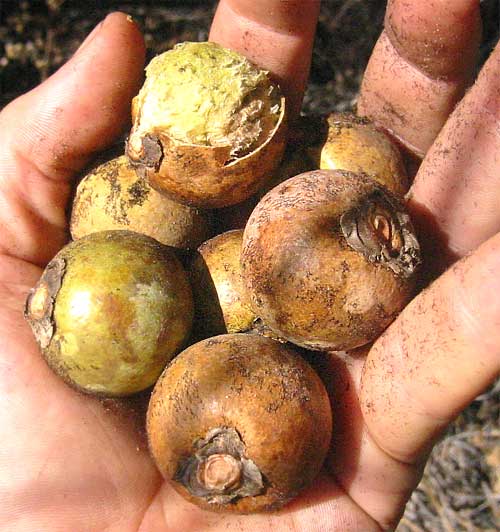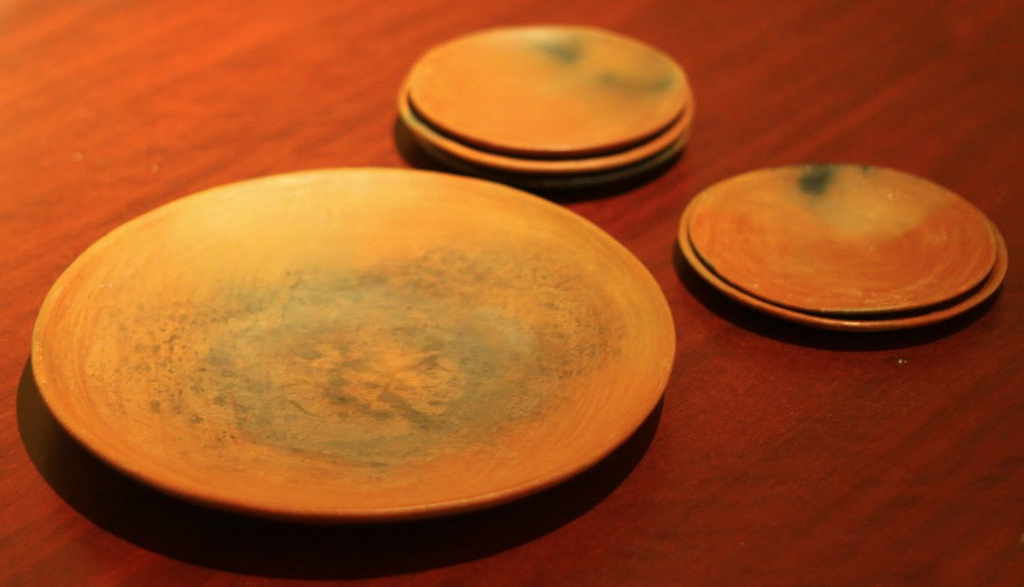|
Lenca Language
Lencan is a small family of nearly extinct indigenous Mesoamerican languages. Languages There are two attested Lencan languages, both extinct (Campbell 1997:167). * Salvadoran Lencan was spoken in Chilanga and Potó (thus the alternative language name Potón). Lencans had arrived in El Salvador about 2,000 years B.P. and founded the site of Quelepa. One speaker remains. * Honduran Lencan was spoken with minor dialect differences in Intibucá, Opatoro, Guajiquiro, Similatón (modern Cabañas), and Santa Elena. Some phrases survive; it is not known if the entire language still exists. The languages are not closely related; Swadesh (1967) estimated 3,000 years since separation. Arguedas Cortés (1987) reconstructs Proto-Lencan with 12 consonants (including ejectives) and 5 vowels. External relationships The external relationships of the Lencan languages are disputed. Inclusion within Macro-Chibchan has often been proposed; Campbell (1987) reported that he found no solid ... [...More Info...] [...Related Items...] OR: [Wikipedia] [Google] [Baidu] |
El Salvador
El Salvador (; , meaning " The Saviour"), officially the Republic of El Salvador ( es, República de El Salvador), is a country in Central America. It is bordered on the northeast by Honduras, on the northwest by Guatemala, and on the south by the Pacific Ocean. El Salvador's capital and largest city is San Salvador. The country's population in 2022 is estimated to be 6.5 million. Among the Mesoamerican nations that historically controlled the region are the Lenca (after 600 AD), the Mayans, and then the Cuzcatlecs. Archaeological monuments also suggest an early Olmec presence around the first millennium BC. In the beginning of the 16th century, the Spanish Empire conquered the Central American territory, incorporating it into the Viceroyalty of New Spain ruled from Mexico City. However the Viceroyalty of Mexico had little to no influence in the daily affairs of the isthmus, which was colonized in 1524. In 1609, the area was declared the Captaincy General of Guatemala by t ... [...More Info...] [...Related Items...] OR: [Wikipedia] [Google] [Baidu] |
Ejective
In phonetics, ejective consonants are usually voiceless consonants that are pronounced with a glottalic egressive airstream. In the phonology of a particular language, ejectives may contrast with aspirated, voiced and tenuis consonants. Some languages have glottalized sonorants with creaky voice that pattern with ejectives phonologically, and other languages have ejectives that pattern with implosives, which has led to phonologists positing a phonological class of glottalic consonants, which includes ejectives. Description In producing an ejective, the stylohyoid muscle and digastric muscle contract, causing the hyoid bone and the connected glottis to raise, and the forward articulation (at the velum in the case of ) is held, raising air pressure greatly in the mouth so when the oral articulators separate, there is a dramatic burst of air. The Adam's apple may be seen moving when the sound is pronounced. In the languages in which they are more obvious, ejectives are often de ... [...More Info...] [...Related Items...] OR: [Wikipedia] [Google] [Baidu] |
Wiktionary
Wiktionary ( , , rhyming with "dictionary") is a multilingual, web-based project to create a free content dictionary of terms (including words, phrases, proverbs, linguistic reconstructions, etc.) in all natural languages and in a number of artificial languages. These entries may contain definitions, images for illustration, pronunciations, etymologies, inflections, usage examples, quotations, related terms, and translations of terms into other languages, among other features. It is collaboratively edited via a wiki. Its name is a portmanteau of the words ''wiki'' and ''dictionary''. It is available in languages and in Simple English. Like its sister project Wikipedia, Wiktionary is run by the Wikimedia Foundation, and is written collaboratively by volunteers, dubbed "Wiktionarians". Its wiki software, MediaWiki, allows almost anyone with access to the website to create and edit entries. Because Wiktionary is not limited by print space considerations, most of Wiktio ... [...More Info...] [...Related Items...] OR: [Wikipedia] [Google] [Baidu] |
Opossum
Opossums () are members of the marsupial order Didelphimorphia () endemic to the Americas. The largest order of marsupials in the Western Hemisphere, it comprises 93 species in 18 genera. Opossums originated in South America and entered North America in the Great American Interchange following the connection of North and South America. The Virginia opossum is the only species found in the United States and Canada. It is often simply referred to as an opossum, and in North America it is commonly referred to as a possum (; sometimes rendered as ''possum'' in written form to indicate the dropped "o"). Possums should not be confused with the Australasian arboreal marsupials of suborder Phalangeriformes that are also called possums because of their resemblance to the Didelphimorphia. The opossum is typically a nonaggressive animal. Etymology The word ''opossum'' is borrowed from the Powhatan language and was first recorded between 1607 and 1611 by John Smith (as ''opassom'') ... [...More Info...] [...Related Items...] OR: [Wikipedia] [Google] [Baidu] |
Quebracho Tree
Quebracho is a common name in Spanish to describe very hard (density 0.9–1.3) wood tree species. The etymology of the name derived from ''quiebrahacha'', or ''quebrar hacha'', meaning "axe-breaker". Species There are at least three similar commercially important tree species that grow in the Gran Chaco region of South America. * the quebracho ** ''Schinopsis lorentzii'' (Syn.: ''Schinopsis marginata'' Engl., ''Schinopsis haenkeana'' Engl.); of the family Anacardiaceae; North Argentina, Paraguay and Bolivia; (the red quebracho, quebracho), ''quebracho-colorado santiagueño'', ''red quebracho santiagueño'', ''quebracho santiagueño'' (also known as ''quebracho cor(o)nillo'', ''cor(o)nillo'', ''quebracho macho'', ''quebracho negro'' or ''moro'', ''quebracho rojo'', ''quebracho bolí'', ''horco quebracho'', ''quebracho serrano'', ''quebracho montano'', ''quebracho crespo'', ''quebracho del cerro'', ''quebracho colorado de las sierras'' o ''del cerro'' and ''quebracho cordobés ... [...More Info...] [...Related Items...] OR: [Wikipedia] [Google] [Baidu] |
Jocote
''Spondias purpura'' is a species of flowering plant in the cashew family, Anacardiaceae, that is native to tropical regions of the Americas, from Mexico to Brazil. It is also very common in most of the Caribbean islands. It is commonly known as jocote, which derives from the Nahuatl word '' xocotl'', meaning any kind of sour or acidic fruit. Other common names include red mombin, plum, purple mombin, hog plum, ciriguela, ceriguela, seriguela, siriguela (Brazil) cocota, ciruela huesito (Colombia), ciruela, ciruela traqueadora (Panama), ciriguela, cirigüela, cirguela, cirguelo (Ecuador), makapruim (ABC_islands_(Leeward_Antilles)), and siniguelas (Philippines). It is a popular fruit throughout Central America, particularly in El Salvador, Nicaragua , Honduras and in Costa Rica. History Jocote trees have been used by the people of Mexico and Central America (Mesoamerica) for thousands of years, for both food and medicinal uses. The trees are also used to create living fences and to ... [...More Info...] [...Related Items...] OR: [Wikipedia] [Google] [Baidu] |
Coyol
''Acrocomia aculeata'' is a species of palm native to the Neotropics, from southern Mexico and the Caribbean south to Paraguay and northern Argentina. Common names include grugru palm, gloo gloo, macaúba palm, coyol palm, and macaw palm; synonyms include ''A. lasiospatha, A. sclerocarpa'', and ''A. vinifera''. The fruit turns yellow when ripe and has a hard outer shell. The pulp is slightly sweet and is extremely slimy and sticky. Description It grows up to 15–20 m tall, with a trunk up to 50 cm in diameter, characterized by numerous slender, black, viciously sharp 10 cm long spines jutting out from the trunk. The leaves are pinnate, 3–4 m long, with numerous slender, 50–100 cm long leaflets. Petioles of the leaves are also covered with spines. The flowers are small, produced on a large branched inflorescence 1.5 m long. The fruit is a yellowish-green drupe 2.5–5 cm in diameter. The inner fruit shell, also called endocarp, is very tough to break an ... [...More Info...] [...Related Items...] OR: [Wikipedia] [Google] [Baidu] |
Comal (cookware)
A comal is a smooth, flat griddle typically used in Mexico, Central America, and parts of South America, to cook tortillas and arepas, toast spices and nuts, sear meat, and generally prepare food. Similar cookware is called a budare in South America. Some comals are concave and made of ''barro'' (clay). These are still made and used by the indigenous peoples of Mexico and Central America. Comals are similar to the American griddle or the Indian tawa, and are often used and named interchangeably with these. Comals for home use are generally made from heavy cast iron, and sized to fit over either one burner on the stovetop (round) or two burners front to back (elongated oval). In many indigenous and pre-Hispanic cultures, the comal is handed down from grandmother to mother to daughter, the idea being that a comal tempered over many years of usage will heat faster and cook cleaner. History The history of such cooking methods dates back to the pre-Columbian era, when powdered-homin ... [...More Info...] [...Related Items...] OR: [Wikipedia] [Google] [Baidu] |
Roberto Castillo (Honduras)
Roberto Castillo (1950–2008) was a Honduran philosopher and writer. A 2002 novel by Roberto Castillo, ''La guerra mortal de los sentidos'', chronicles the adventures of the "Searcher for the Lenca Language Lencan is a small family of nearly extinct indigenous Mesoamerican languages. Languages There are two attested Lencan languages, both extinct (Campbell 1997:167). * Salvadoran Lencan was spoken in Chilanga and Potó (thus the alternative lang ...." References Honduran short story writers Honduran male writers Male short story writers Honduran academics 1950 births 2008 deaths Honduran philosophers 20th-century Honduran writers Honduran novelists 21st-century Honduran writers 20th-century Honduran philosophers 20th-century short story writers 20th-century male writers 21st-century philosophers 21st-century novelists 21st-century male writers Male novelists {{Honduras-writer-stub ... [...More Info...] [...Related Items...] OR: [Wikipedia] [Google] [Baidu] |
Lyle Campbell
Lyle Richard Campbell (born October 22, 1942) is an American scholar and linguist known for his studies of Indigenous languages of the Americas, indigenous American languages, especially those of Central America, and on historical linguistics in general. Campbell is professor emeritus of linguistics at the University of Hawaiʻi at Mānoa. Life and career Lyle Campbell was raised in rural Oregon. He received a B.A. in archaeology and anthropology from Brigham Young University in 1966, then an M.A. in linguistics from the University of Washington in 1967, followed by doctoral studies at UCLA, earning a Ph.D. in 1971. Campbell has held appointments at the University of Missouri (1971–1974), the State University of New York at Albany (1974–1989), Louisiana State University (1989–1994), the University of Canterbury, in Christchurch, New Zealand (1994–2004), the University of Utah (2004–2010), and currently the University of Hawai'i at Manoa. He has been a visiting profess ... [...More Info...] [...Related Items...] OR: [Wikipedia] [Google] [Baidu] |
Lempa River
The Lempa River ( es, Río Lempa) is a river in Central America. Geography Its sources are located in between the Sierra Madre and the Sierra del Merendón in southern Guatemala, near the town of Olopa. In Guatemala the river is called ''Río Olopa'' and flows southwards for before entering Honduras and changing its name to Lempa river at . In Honduras it flows through Ocotepeque Department for , and crosses the border with El Salvador at the town of Citalá () in the department of Chalatenango. The river continues its course for another in El Salvador, flowing in a generally southwards direction until it reaches the Pacific Ocean in the department of San Vicente. The river forms a small part of the international boundary between El Salvador and Honduras. The river's watershed covers , of which (56 percent) is in El Salvador, in Honduras and in Guatemala. Forty-nine percent of El Salvador's territory is covered by the Lempa river basin, and 77.5 percent of the ... [...More Info...] [...Related Items...] OR: [Wikipedia] [Google] [Baidu] |





